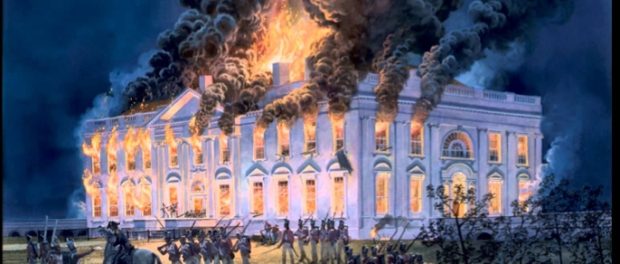1814: Revenge of the British on the White House & Other Quebec Curios
Part of “The Canadas in Britain”, 1792-1827
While many British forces were fighting for the King and their Empire during the Napoleonic Wars, Britain did have an important force not only in leadership but also in the number of British army forces sent over to fight to defend the Canadas. With Napoleon in exile in early 1814, this number of British forces increased as the British could now send more forces to defend the Canadas. It is some of these uniquely British forces that had a final revenge on their once-loyal colony in their short period occupying Washington, D.C.
It is late August in 1814. The British forces, led by General Robert Ross, had a strength of over four thousand trained men. Having quickly overpowered the militia stationed in Maryland, they immediately set their sights on the capital. The President of the United States, James Madison, and his wife escaped before the British landed; Madison had been present in Maryland and took command of an American holding before fleeing with his family towards safety, unable to gauge the exact number of British coming towards them. The White House, then simply called the Presidential Mansion at the time, was vacated. Contrary to popular history, James Madison’s wife did not personally save a portrait of George Washington; rather, she ordered slaves and servants to break the frame that held the portrait and send the portrait, rolled up, to safety as she also fled with the mansion’s silverware and important documents. Said to be under orders to destroy the city, after having dinner in the Presidential Mansion, Ross’ forces ravaged the city, burning almost all of the public buildings including the White House, the then-unfinished Capitol, and the Library of Congress, as well as some private dwellings as well.
For the Americans, however, help was on its way. During the British excursion, a violent tornado formed over the Washington area and the rain that it brought with it put out the fires set by the British armies. The winds were strong enough to raise artillery into the air. Unfortunately, even if the tornado helped put out the fires, the sheer force of the storm also had the side effect of destroying even more of the buildings in Washington, including parts of the White House that the British didn’t initially destroy with their fires. Unable to hold the district for much longer, Ross ordered his troops to withdraw. In total, the British occupation of this area lasted a little over one day.






